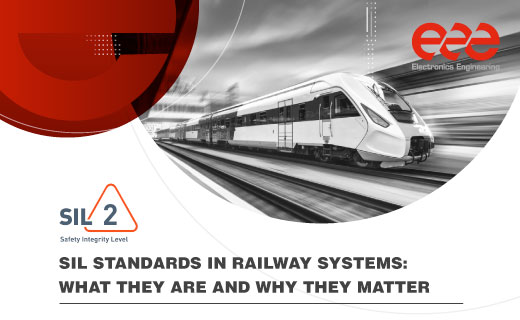The SIL (Safety Integrity Level) standard has become an essential pillar for the railway industry. Its function is clear: to ensure that critical systems (such as signalling, braking or train control) operate reliably and safely, even in conditions that are less than ideal.
What is the SIL regulation?
SIL is a metric used to define the level of risk reduction offered by a safety system. Established by international standards such as IEC 61508 and EN 50129 (specific to the railway sector), the standard classifies systems into four levels: SIL 1, SIL 2, SIL 3 and SIL 4. Each level represents a different degree of reliability. A SIL 2 system must meet higher requirements than a SIL 1 system, and so on.
Why is it important in the rail sector?
The rail system operates with multiple interdependent elements where a single error can compromise the safety of hundreds of passengers. This is where the SIL standard comes into play: it allows critical systems to be assessed, designed and validated against very strict criteria that minimise the risk of failure.
Some of its most common applications in railways are in signalling systems, emergency braking systems and automatic train control (CBTC or ERTMS), where any error can affect the overall coordination of the network.
A key tool for reliability
The adoption of SIL-certified systems is not only a technical or legal requirement, but also a sign of commitment to operational excellence. These systems reduce downtime, prevent incidents and improve the perception of the rail service among users and operators.
At Triple E we have been working for more than two decades with our own SIL 2 certified technology. Our knowledge of the standard and its practical application allows us to accompany operators with a clear focus: to offer maximum safety without compromising reliability.










